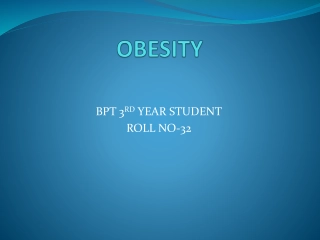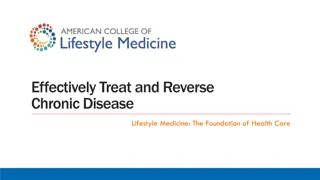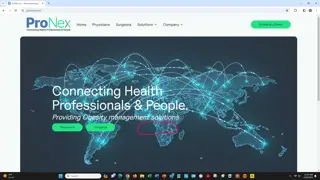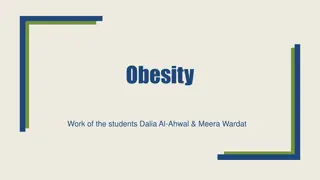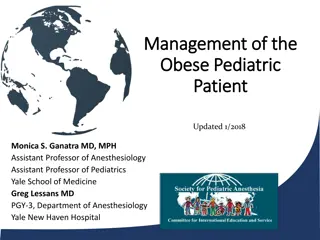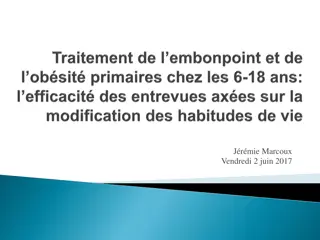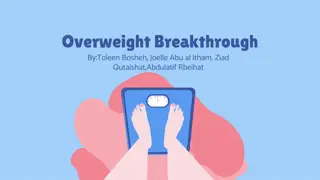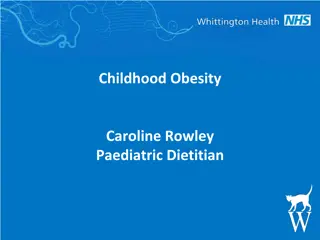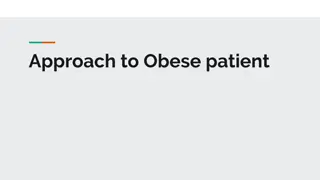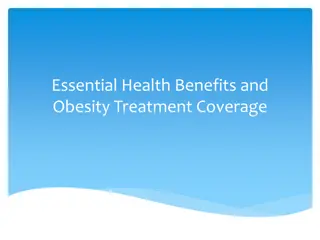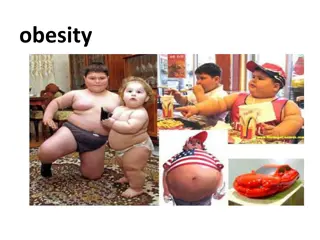Lifestyle Medicine Approach to Pediatric Obesity in the Medical Home
Lifestyle Medicine uses evidence-based interventions like whole-food plant-based eating, regular physical activity, sleep, stress management, and social connection to address chronic diseases in children. Quality improvement ideas include promoting healthy habits, implementing lifestyle medicine-based pathways, and improving follow-up care. The approach focuses on behavior change and positive psychology to support patients in achieving better health outcomes.
Download Presentation

Please find below an Image/Link to download the presentation.
The content on the website is provided AS IS for your information and personal use only. It may not be sold, licensed, or shared on other websites without obtaining consent from the author.If you encounter any issues during the download, it is possible that the publisher has removed the file from their server.
You are allowed to download the files provided on this website for personal or commercial use, subject to the condition that they are used lawfully. All files are the property of their respective owners.
The content on the website is provided AS IS for your information and personal use only. It may not be sold, licensed, or shared on other websites without obtaining consent from the author.
E N D
Presentation Transcript
Spring QI Workshop A Lifestyle Medicine Approach to Pediatric Obesity in the Medical Home April 21, 2022 WHAT IS LIFESTYLE MEDICINE: Lifestyle Medicineuses evidence-based lifestyle therapeutic intervention including a whole-food plant predominant eating pattern, regular physical activity, restorative sleep, stress management, avoidance of risky substances, and positive social connection to prevent, treat and often reverse chronic disease. Lifestyle Medicine emphasizes positive psychology and motivational interviewing to support behavior change.
Quality Improvement( change) Ideas Summary of past QI projects Documenting appropriate BMI Z codes Motivational interviewing; assessing patient readiness Documenting SMART goals if appropriate Focus on follow-up with MD and referrals to Dietician All well visits between age 5-15, BMI will be assessed, recorded, and discussed Expedite referrals to nutritionist; implemented a cooking class Identify community resources (researched local groceries and food banks) implement informational sheets for patients) Implementing a Lifestyle medicine based clinical pathway to address Obesity Reminders in EMR about appropriate labs to be done Changing language from Obesity follow-up: to Health Weight or Healthy Habits follow-up 3
QI ideas for continuing Practices Workflow changes to do appropriate labs based on BMI Addressing some SDOH factors associated with Obesity Partnering with local community resources , health department etc. Working on improving compliance with follow up visits Lifestyle medicine clinical pathway practice spread Continue Resident training on Motivational interview, lifestyle medicine approach 4
ABP MOC Part 4 ABP MOC Part 4 To be Eligible for Part 4 credits: Review the driver diagram and pick a measure change idea that you want to work on Write your Aim statement define the denominator, numerator, percentage improvement and time frame Collect 3 or more data sets and 2 QI Cycles Do 2 PDSA or QI Techniques during the 9-week period (April 21st - June 15th) QTIP practices can use QIDA data Complete and send the ABP attestation form.


